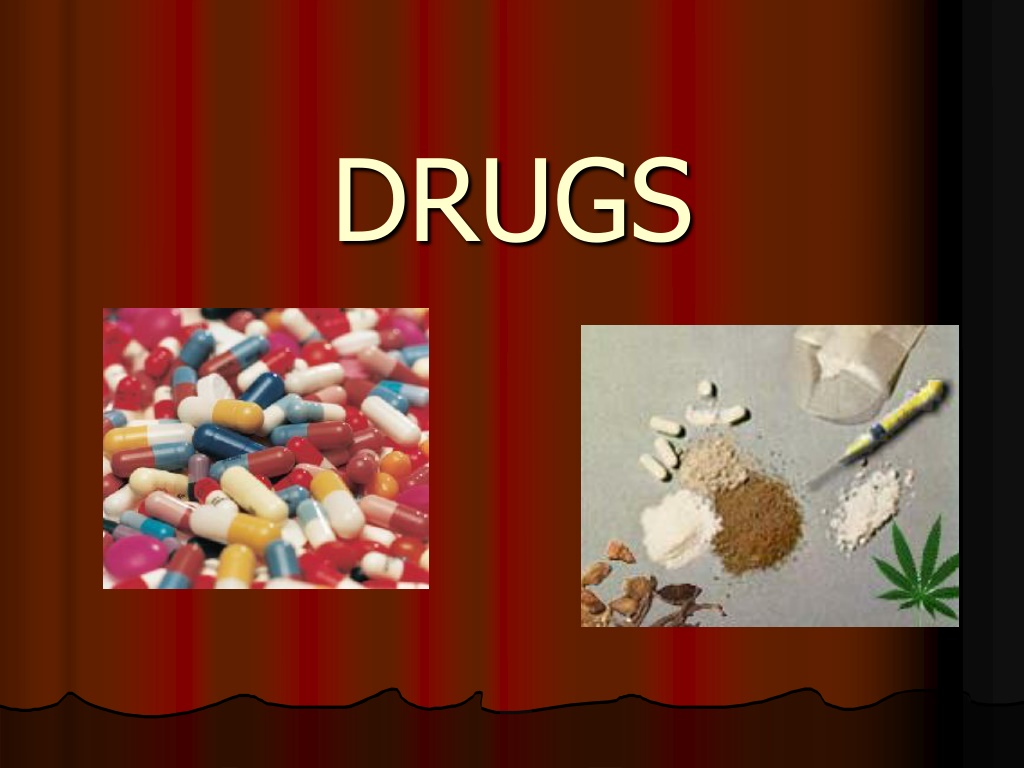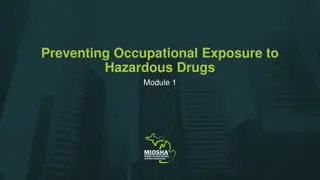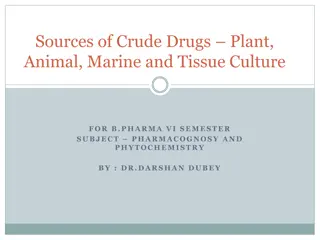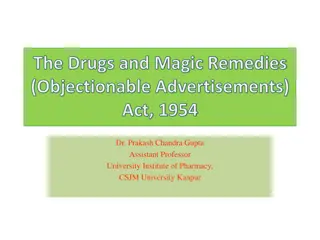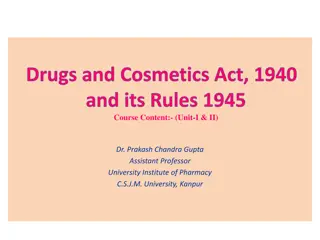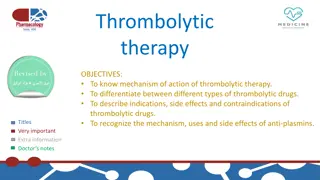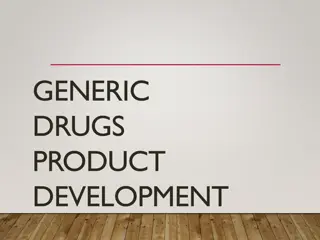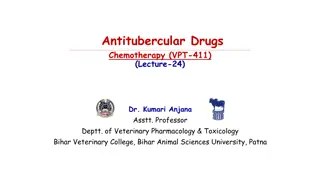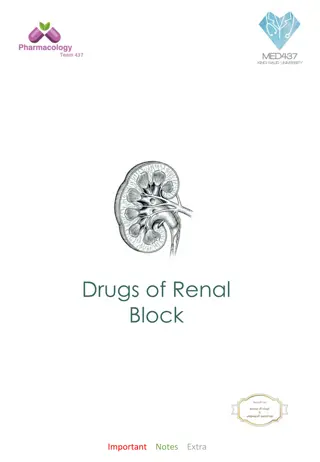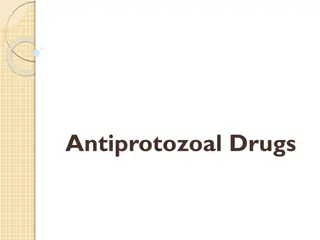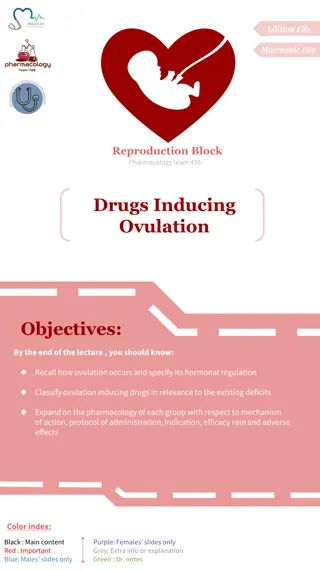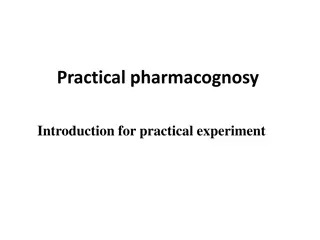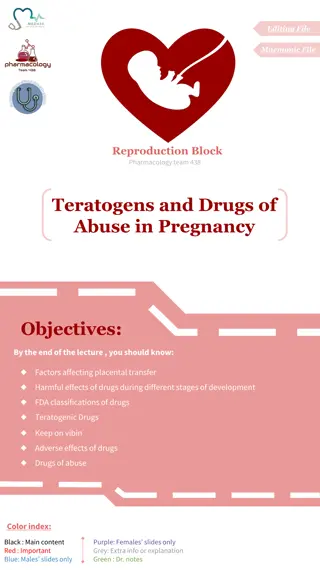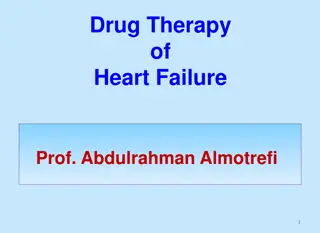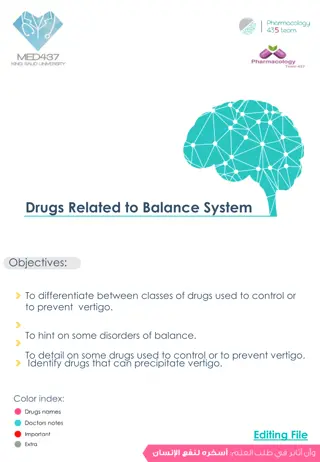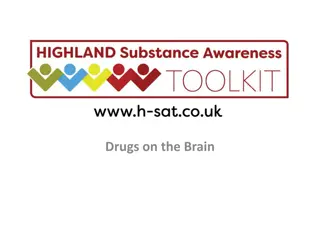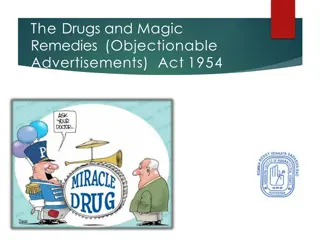Drugs and Their Effects
Drugs, including prescription, over-the-counter, and illegal substances, have various effects on the body and mind. Drug use can lead to addiction, physical dependence, and overdose. It is crucial to distinguish between medicine and drug misuse or abuse to ensure safe and proper usage. Recognizing signs of tolerance, craving, and loss of control is essential in identifying drug-related issues. Understanding the psychoactive and mood-altering effects of drugs is key to addressing addiction and seeking help for recovery.
Download Presentation

Please find below an Image/Link to download the presentation.
The content on the website is provided AS IS for your information and personal use only. It may not be sold, licensed, or shared on other websites without obtaining consent from the author.If you encounter any issues during the download, it is possible that the publisher has removed the file from their server.
You are allowed to download the files provided on this website for personal or commercial use, subject to the condition that they are used lawfully. All files are the property of their respective owners.
The content on the website is provided AS IS for your information and personal use only. It may not be sold, licensed, or shared on other websites without obtaining consent from the author.
E N D
Presentation Transcript
Drug a substance that causes a physical or emotional change in a person. *Over-the-counter- (non- prescription) *Prescription Drugs Dr. written order *Tobacco*Alcohol*Illegal drugs* Herbal*Caffeine*Inhalants
Effect the influence a drug has on the body and the mind or both. Drug Use taking meds properly and in its correct dosage.
Drug Misuse improper use of a drug usually done by mistake Drug abuse intentional improper use of a drug.
Psychoactive effects an effect on a person s mood or behavior. Mood-altering affects brain activity
Addiction a condition in which the body relies on a given drug to help it function. Compulsive use of a drug despite any cost Changes the structure and chemistry of the brain
Medicine a legal substance used to treat an illness or ailment Side effects an effect that accompanies the expected effect of a drug Drug allergies an unwanted effect that accompanies the desired effect of a drug
Overdose a serious sometimes fatal reaction to a large dose of a drug Dose an exact amount of a drug
Tolerance- need an increased amount to feel its effects Craving- strong need for a drug, can t manage without it Loss of control- preoccupied with drug or alcohol and unable to limit use
Physical Dependence- experience withdrawal symptoms Withdrawal the body s reaction when it doesn t receive a drug it depends on Muscle trembling Coma Disorientation Death Insomnia Sweats
Stimulants speed up the mental and physical responses of the central nervous system. Increase Heart Rate blood pressure breathing rate alertness
Depressants the opposite of stimulants, these drugs slow down brain and body reactions decreases heart and breathing rates lowers blood pressure Alcohol Barbiturates Sedatives Tranquilizers
Narcotics Powerful painkillers suppress the CNS. They have a high potential for abuse and addiction. Heroin OxyContin Codeine Vicodin Methadone Darvon
Hallucinogens distort sensory information going to the brain, while not all users hallucinate, have a distorted sense of reality. No medical use. LSD PCP MDMA Ecstasy GHB Ketamine Mushrooms = Also know as club drugs Rohypnol
Inhalants common household products. Chemical inhaled gives mind-altering effects.
Marijuana formally classified as both a hallucinogen and a depressant, marijuana and its derivatives are in a category all by themselves. Up to 20 times stronger than 30 years ago
Why do people use drugs?? Curiosity Peer pressure Pleasure seeking Act of rebellion Boredom
Factors That Influence Drug Action Dose Age Body Weight Gender Previous knowledge of drug Other drugs in body Contents of stomach Mood Expectations Environment
How Drugs Are Taken Inhaled Injection Orally Snorted Transdermal (Patches) Through body orifices
Clandestine Laboratory used for the primary purpose of illegally manufacturing controlled substances typically small and use common household appliances, glassware, and readily available chemicals
Stages of Addiction Stage 1 curiosity is a motivator learning to trust/mistrust the drug used High is still a new feeling
Stages of Addiction Stage 2 User is thinking more about drugs Previous relationships become difficult User uses when alone User still thinks they have control
Stages of Addiction Stage 3 Seeks out the high Has confidence in using the drug User thinks the drug won t hurt them Peer group uses Tolerance develops
Stages of Addiction Stage 4 Can no longer get high User uses the drug to avoid being sick! Drugs become the center of their life
This powerpoint was kindly donated to www.worldofteaching.com http://www.worldofteaching.com is home to over a thousand powerpoints submitted by teachers. This is a completely free site and requires no registration. Please visit and I hope it will help in your teaching.
